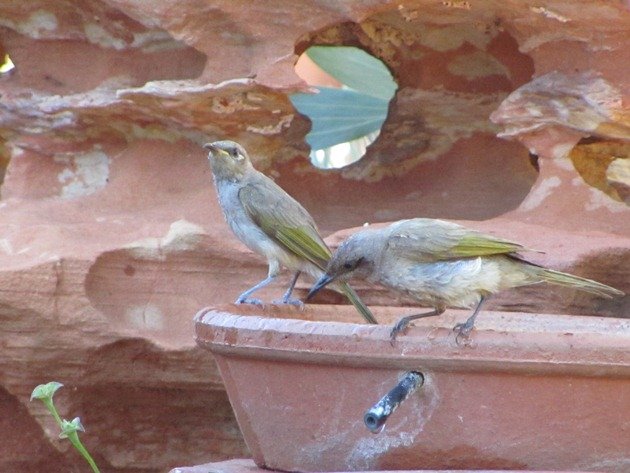
While we are away in the Southern Highlands trying to keep warm and enjoying the bird species of that area I will share with you some of our local Broome birds.
The most common Honeyeater that visits our garden is the Brown Honeyeater and it visits from before dawn until dusk. We have managed to attract this species quite easily by planting a lot of native flowering plants in our garden and they are also attracted by the constant supply of fresh water. There is always something in flower and we also allow self-seeding of the native plants due to the fact that they are not all long-living plants and we do have the occasional termite attack. Some plants will recover, but others will succumb to the termite invasion which usually is an invasion into the main root system from underground. Once this has occurred there is little you can do, but wish the plant luck.
Brown Honeyeaters are dispersed widely in Australia across the north and down the west and east coast. Although they do mainly appear to be just an olive brown in colour they do have a small yellow patch just behind the eye. This yellow patch turns to black while breeding and the header photograph shows the feature. They are one of the smaller Honeyeaters, but also one of the more vocal of the species. They call with a tutting sound when we have a Brown Goshawk present in the garden and often they can see it even if we can’t due to the density of our main native tree.
Bathing is an important part of their daily routine in our garden and there does not seem to be a limit as to how many can fit into one bathing terracotta saucer. This is only a few metres from our home, but they have never been bothered by that.
Bathing Brown Honeyeaters
Once the young birds arrive it is amusing to watch their antics in the water.
Young Brown Honeyeaters having fun in the water
As you can see they have the perfect shaped beak for getting all of the nectar out of flowering plants. They are also rather care-free in our garden!


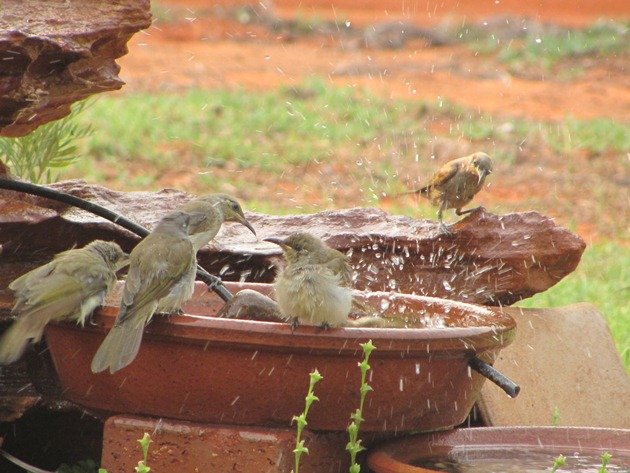
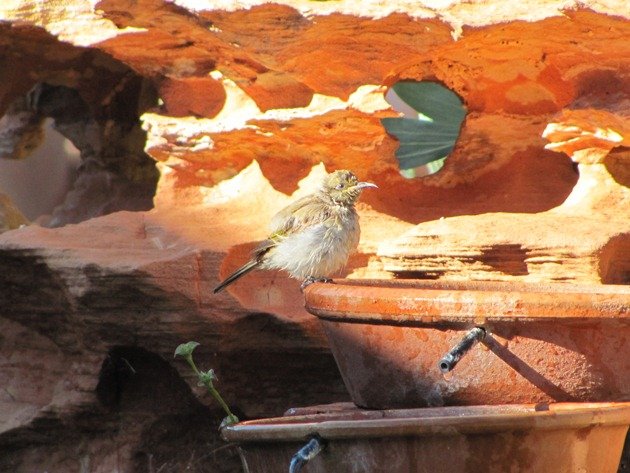
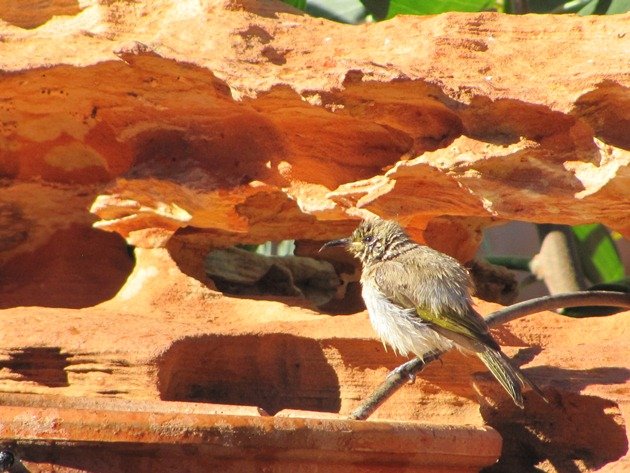
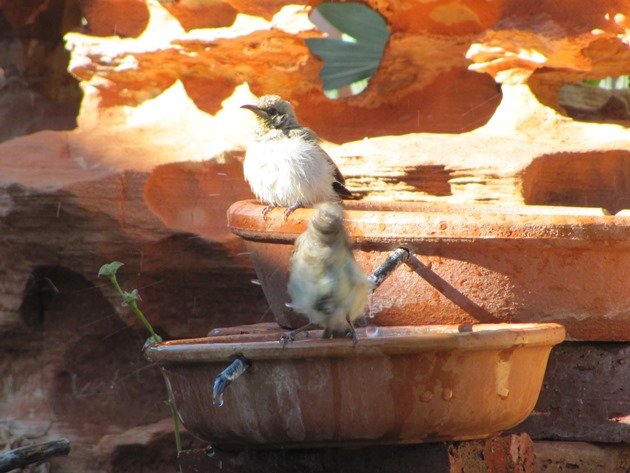
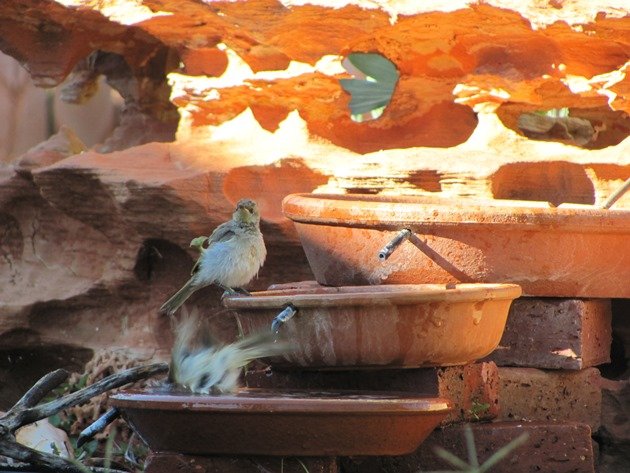
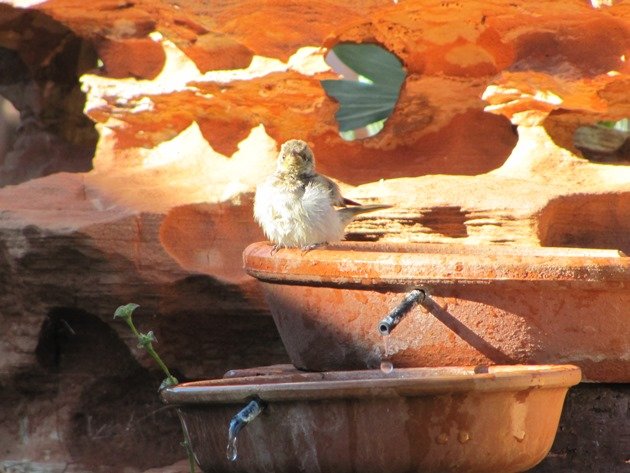











Leave a Comment